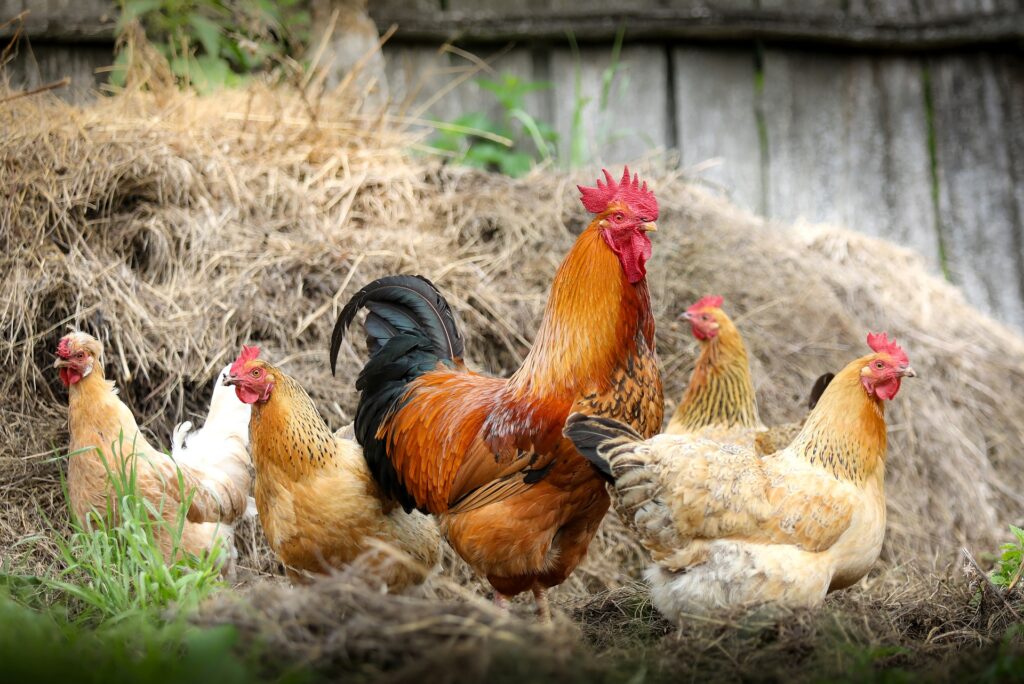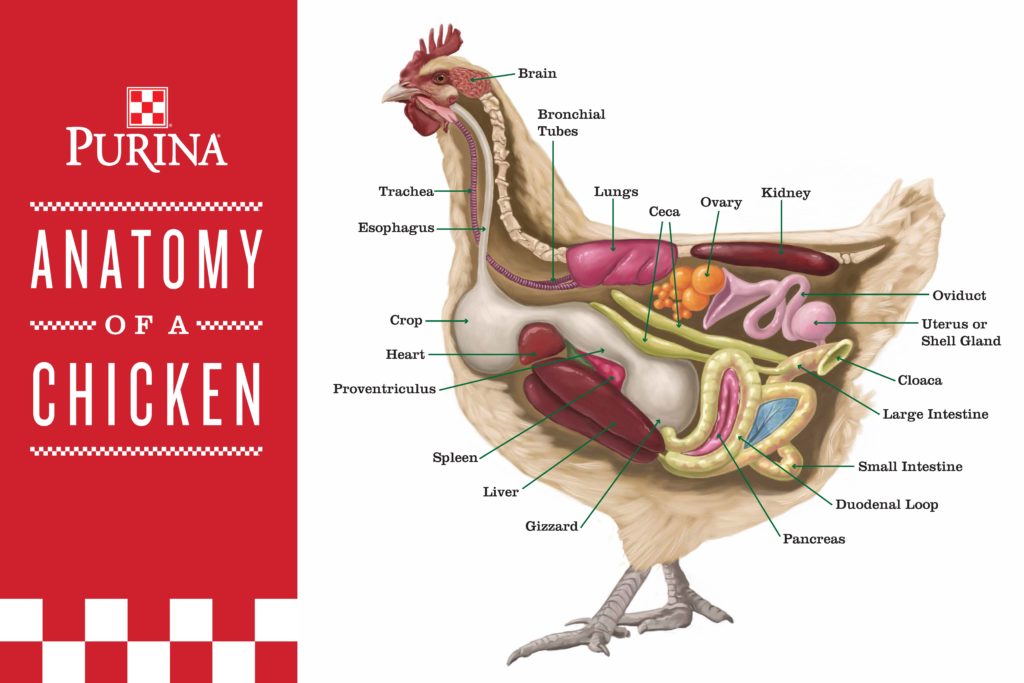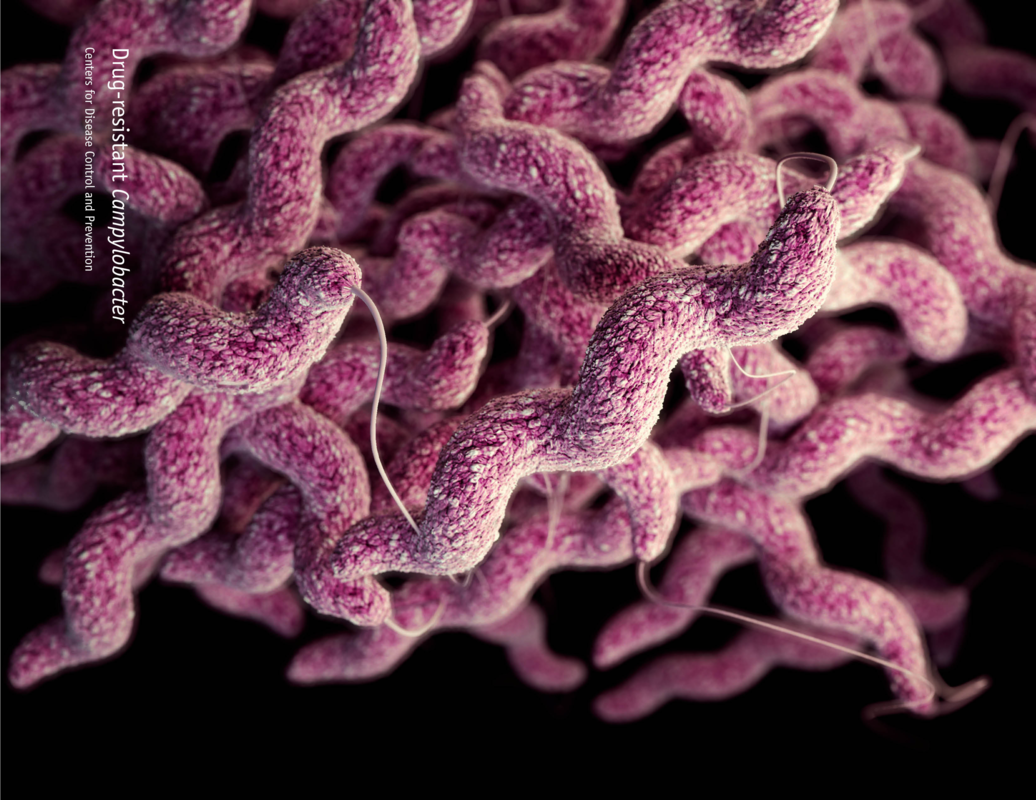
Salmonella and chickens
Salmonella enterica is a common intestinal bacterial species in domestic and wild birds, mice, other rodents, cows, pigs, and many other animals. Salmonella gets along especially well with poultry, often not causing any observable symptoms. Unfortunately, humans who accidentally ingest Salmonella will typically develop diarrhea, cramping, and potentially nausea and vomiting and a fever. Rarely, people infected with Salmonella will develop blood infections (septicemia) or other severe conditions. About 20% of people infected with Salmonella will be hospitalized, largely because they will become dehydrated from diarrhea and/or vomiting. Children, immunocompromised people, and people over 65 are most likely to become seriously ill and be hospitalized.
There are about 2,500 different serovars (distinct types) of Salmonella, with about 20 different types causing 75% of illnesses in the United States (this is why we don’t have a vaccine for Salmonella at this point). Getting Salmonella once only protects you fully against the type of Salmonella you had and you can still get sick if you encounter a different type of Salmonella later.
Chickens carry Salmonella in their intestines and in the follicles of their feathers (this is partially due to dustbathing habits). However, because they both poop and lay eggs out of their cloaca, there is a connection between their intestines and their uterus/shell gland. Salmonella can use this connection to travel into the uterus and infect the egg before the shell develops. This means chicks can be born with Salmonella, which they got from their mom through the egg. Chicks (and adults) can also get Salmonella from infected feed or water, contact with wild animals/birds or their droppings, and interacting with other chickens/poultry who have Salmonella. Most chicks will get better from Salmonella after a short time (days/weeks), but a few will continue to carry Salmonella up through adulthood and egg-laying. Adults can also get Salmonella as adults; they can clear out the infection after a week or two.

The main way humans get Salmonella from chickens/poultry are through either eating poultry meat/eggs that are contaminated with Salmonella or through handling infected live poultry or eggs. Chicks seem to be the highest risk for Salmonella. Our research shows that roughly 8% of chick shipments from hatcheries who don’t monitor/test for Salmonella contain Salmonella. Unfortunately, chicks are adorable, so they get handled a lot by their owners/owners’ kids, which is a prime opportunity for them to pass on Salmonella.
There are a few simple precautions owners can take to reduce their opportunities for getting Salmonella from their chicks and adult chickens.
- Don’t kiss chicks or chickens. If they have Salmonella on their feathers, this is a great way to get it in your mouth
- Wash your hands thoroughly after handling your chicks or chickens or their eggs (eggs and poop come out the same hole, so even clean-looking eggs can be contaminated)
- Supervise kids around chicks/chickens. Make sure they don’t kiss the chickens and that they wash their hands afterwards
- Wear different shoes in the chick pen than you wear indoors, so you don’t track poop and Salmonella indoors (Salmonella can survive in dried poop, too)
- Wear a mask when you clean your coop to avoid inhaling dried manure dust and Salmonella
Learn more about Campylobacter and chickens

Campylobacter species are another common inhabitant of chickens, and are estimated to be the third most common cause of foodborne illness in the U.S., though they are rarely diagnosed. While chicks are born without Campylobacter, regardless of their parents’ status, they can quickly be colonized through contact with infected birds. Adult chickens can carry up to 10 billion Campylobacter –and only 500-10,000 bacteria are needed to make a human sick. The most common type of Campylobacter in chickens is C. jejuni, but C. coli can also infect chickens.
While Campylobacter causes no symptoms in chickens, in humans, it causes fever, cramping, vomiting and diarrhea. Nausea, headache, and muscle pain are also common. Most people who become ill with Campylobacter will get better on their own in a few days to a couple of weeks. However, 1 in every 2,000 people who contract Campylobacter will develop Guillain-Barre syndrome (Campylobacter is the most common cause of Guillain-Barre Syndrome). This syndrome causes a temporary paralysis of part or most of the patient’s body, and typically requires hospitalization. Most patients will recover in time, but recovery can take months to years to regain full function. Another unpleasant complication of an encounter with Campylobacter is reactive arthritis. This inflammatory condition typically involves pain in the lower leg and foot joints and sometimes causes eye inflammation and swelling of fingers and toes. It typically goes away within a year, but can become chronic; it is more common in men than women.
Protecting yourself from Campylobacter involves careful attention to hand washing and hygiene and not kissing or cuddling birds. There is no vaccine for Campylobacter.
Learn about biosecurity
- CDC’s webpage on backyard poultry: https://www.cdc.gov/healthypets/pets/farm-animals/backyard-poultry.html
- USDA National Poultry Improvement Plan information: https://www.poultryimprovement.org/default.cfm?CFID=333901&CFTOKEN=cbec59e8a1d3e308-507EF883-9AD4-4C81-742ECCCC823020E9
- NPIP-participating hatcheries in Vermont: https://www.poultryimprovement.org/documents/vt.pdf
- USDA Biosecurity Resources (aimed at businesses): https://www.aphis.usda.gov/aphis/ourfocus/animalhealth/animal-disease-information/avian/defend-the-flock-program/dtf-resources
- Follow our Facebook page for the latest info on what we’re doing: https://www.facebook.com/UVM-Food-Microbiology-Laboratory-Vermont-Backyard-Chickens-102940957956938
Latest Posts:
